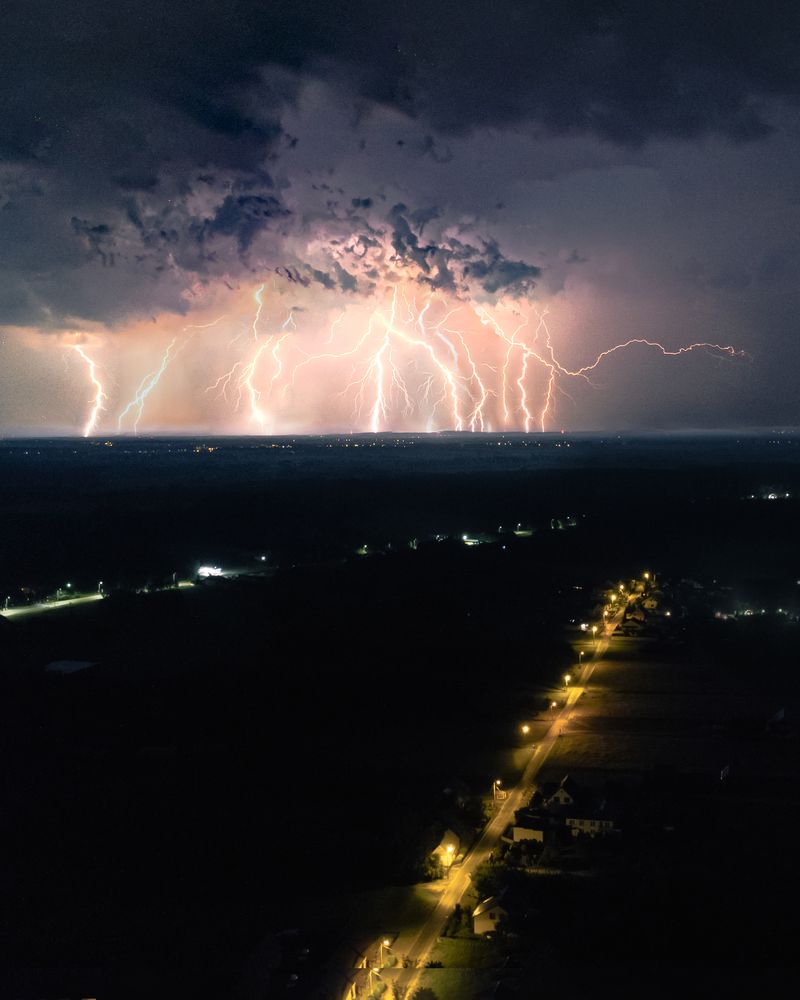Preparing for Hurricane Lee: Atlantic Canada Braces for Devastating Storm
The Approach of Hurricane Lee
The provinces of Atlantic Canada are making preparations for the arrival of Hurricane Lee, which is expected to bring strong winds, heavy rain, powerful waves, flooding, and power outages. As the storm heads towards New England and Eastern Canada, precautionary measures are being taken, including the removal of boats from the water and securing of property.
Preparations in Maritime Provinces
In Nova Scotia, the village of Chester in Lunenburg County is among the areas added to the watchlist for Hurricane Lee. Jennifer Chandler, commodore of the Chester Yacht Club, and her team have been diligently preparing for what they anticipate to be a significant storm. Residents have been removing their boats from the water, securing equipment, and clearing their decks of furniture in preparation.
Expected Impact
According to Environment Canada, Hurricane Lee is projected to move towards western Nova Scotia and southern New Brunswick, bringing with it heavy rain, strong winds, and powerful waves. Winds could reach up to 120 kilometers per hour, uprooting trees and causing damage to power lines. In areas such as Saint John and Moncton, precipitation of up to 100 millimeters could lead to localized flooding. The central Atlantic coast of Nova Scotia could experience waves as high as four to six meters.
Downgrading to a Post-Tropical Storm
By Friday afternoon, Hurricane Lee was downgraded to a strong post-tropical storm from its initial category 1 hurricane status. According to Bob Robichaud, a meteorologist at Environment Canada, although the storm was weakening, it still posed a significant threat. The powerful storm is expected to pass over southwestern Nova Scotia on Saturday afternoon, bringing the strongest winds and heaviest rainfall.
Preparation is Key
Authorities are urging residents to take immediate action and ensure they are prepared for the storm. The impact of Hurricane Lee is expected to be felt up to 300 kilometers from its center, and some regions may experience high winds and heavy rain as early as Friday evening. It is recommended to have enough food, medication, and other supplies to sustain for 72 hours.
Lessons from Past Storms
The Atlantic provinces have dealt with severe storms before, and the recent memory of last year’s post-tropical storm Fiona, which caused extensive damage, serves as a reminder of the potential dangers. As Bonnie Morse, the mayor of Grand Manan village in New Brunswick, explains, the saturated soil and dense foliage on trees due to recent rains increase the risk of fallen trees damaging power lines.
Emergency Preparedness
Given the potential for the storm’s intensity and the unpredictable nature of weather systems, it is crucial for residents to stay informed and follow advice from local authorities. Prime Minister Blaine Higgs of New Brunswick emphasized the importance of personal safety and urged residents to ensure they have adequate supplies to sustain themselves for at least 72 hours. His message resonates with the precautionary principle, which advocates taking necessary measures to mitigate risks and be prepared for potential emergencies.
Editorial: Building Resilience in the Face of Natural Disasters
The approaching Hurricane Lee serves as a reminder of the urgent need to strengthen our resilience in the face of natural disasters. As climate change continues to influence weather patterns and increase the frequency and intensity of extreme events, it is crucial that we prioritize proactive measures to mitigate risks and enhance our ability to adapt.
Investing in Infrastructure
One key aspect of building resilience is investing in resilient infrastructure. This includes fortifying buildings, bridges, and power grids to withstand the impact of storms and other natural disasters. By ensuring that our infrastructure is designed to withstand extreme weather events, we can minimize damage and ensure the safety of our communities.
Community Preparedness and Early Warning Systems
In addition to resilient infrastructure, community preparedness and effective early warning systems are essential. Through education and outreach programs, communities can be equipped with the necessary knowledge and skills to respond to emergencies. Early warning systems, such as meteorological monitoring and evacuation plans, play a vital role in saving lives and minimizing damage from natural disasters.
Collaboration and International Cooperation
Natural disasters often transcend regional boundaries, requiring cooperation at national and international levels. By sharing best practices, expertise, and resources, countries can work together to enhance preparedness, response, and recovery efforts. International collaboration can also help vulnerable communities access the necessary resources and support to build resilience in the face of climate-related challenges.
Advice: Be Prepared and Stay Informed
As Atlantic Canada braces for the arrival of Hurricane Lee, it is essential for residents to take immediate action and ensure they are prepared. Here are some key steps to consider:
Create an Emergency Kit:
- Include essential items such as food, water, medication, flashlight, batteries, and a first aid kit.
- Ensure you have enough supplies to sustain yourself and your family for at least 72 hours.
Secure Property:
- Remove any outdoor furniture, loose objects, or potentially hazardous materials.
- If possible, secure or store boats and other recreational vehicles.
Stay Informed:
- Follow updates from local authorities, including weather forecasts and evacuation orders.
- Have a battery-powered radio or access to a smartphone to stay connected in case of power outages.
Evacuation:
- If instructed to evacuate, follow the guidance of local authorities and evacuate immediately.
- Inform friends, family, or neighbors of your evacuation plans.
Remember, proactive measures and preparedness can make a significant difference in reducing the impact of natural disasters and ensuring the safety and well-being of individuals and communities.

<< photo by Damian Barczak >>
The image is for illustrative purposes only and does not depict the actual situation.
You might want to read !
- Storm Surge Threatens Coastal Regions of New England and Atlantic Canada
- Hurricane, tropical storm watches issued in Nova Scotia and New Brunswick: A cautionary alert for Atlantic Canada’s coastal regions
- Massive Hurricane Lee sparks concerns over tropical storm and hurricane activity: An in-depth analysis
- “Unleashing Havoc: The Devastating Power of Hurricane Lee and its Trail of Destruction”
- Hurricane Lee Revitalizes and Sets Sights on Nova Scotia: A New Storm Brewing?
- How to Watch the PSG-Nice Ligue 1 Match via Streaming in Canada?
- Newspaper Industry Crisis: Nordstar Sends Metroland Group into Bankruptcy, Leaving Journalism’s Future Uncertain
- “Unpredictable Weather Looms Over Asia Cup 2023 in Colombo: India vs Bangladesh Clash”
- Devastating Floods Claim Lives of 11,300 in Libya’s Coastal City of Derna
- Devastating Floods in Libya: Derna Mourns the Dead and Seeks the Missing
- Florida on High Alert as Hurricane Idalia Approaches
- “Cascading Chaos: Severe Thunderstorms Trigger Widespread Flooding in Chicago”
- Canadian Celebration at Risk as Violent Thunderstorms Loom
- Massive Blaze at Saint John Recycling Facility Forces Shutdown of Local Schools
- Is Hurricane Lee Heading Towards Canada? Debunking the Spaghetti Models
- Decoding Weather Forecasts: Understanding the Meaning of POP




